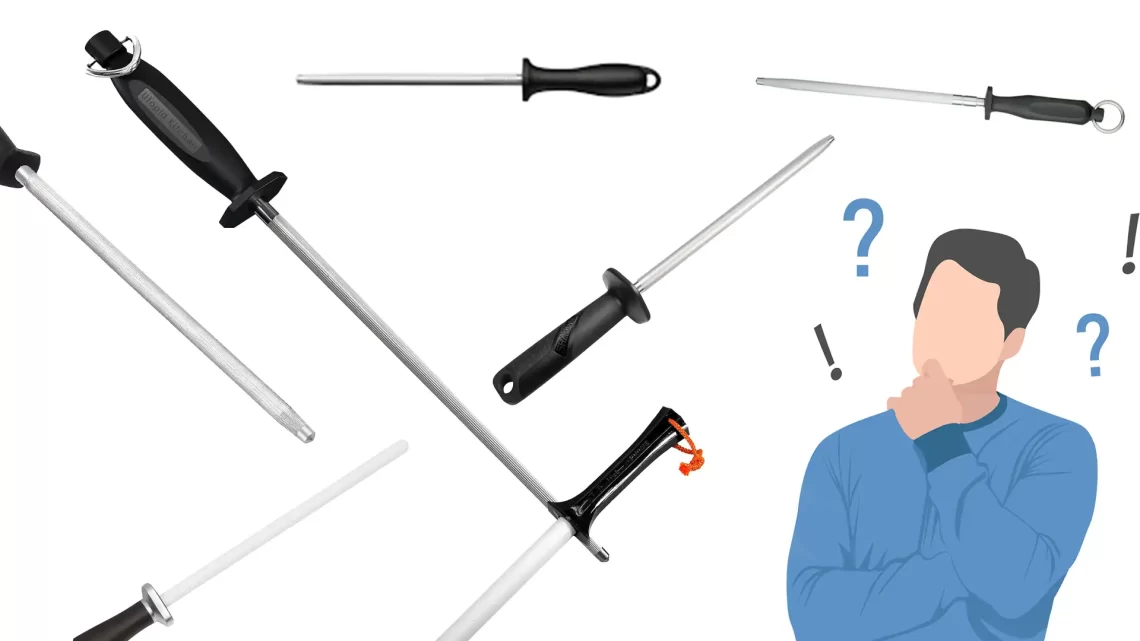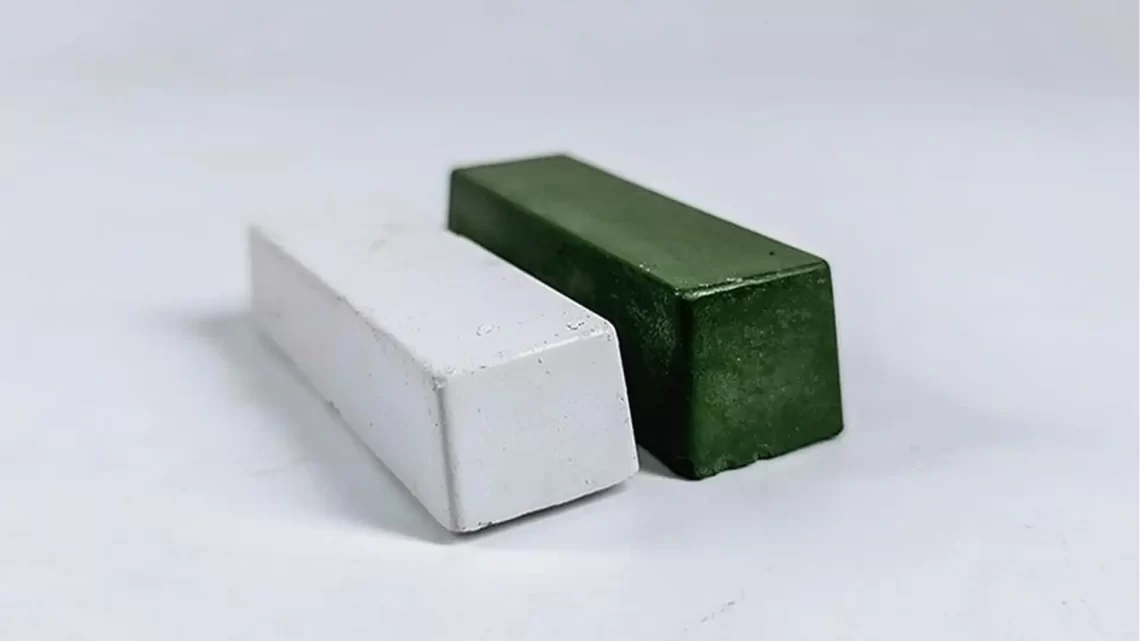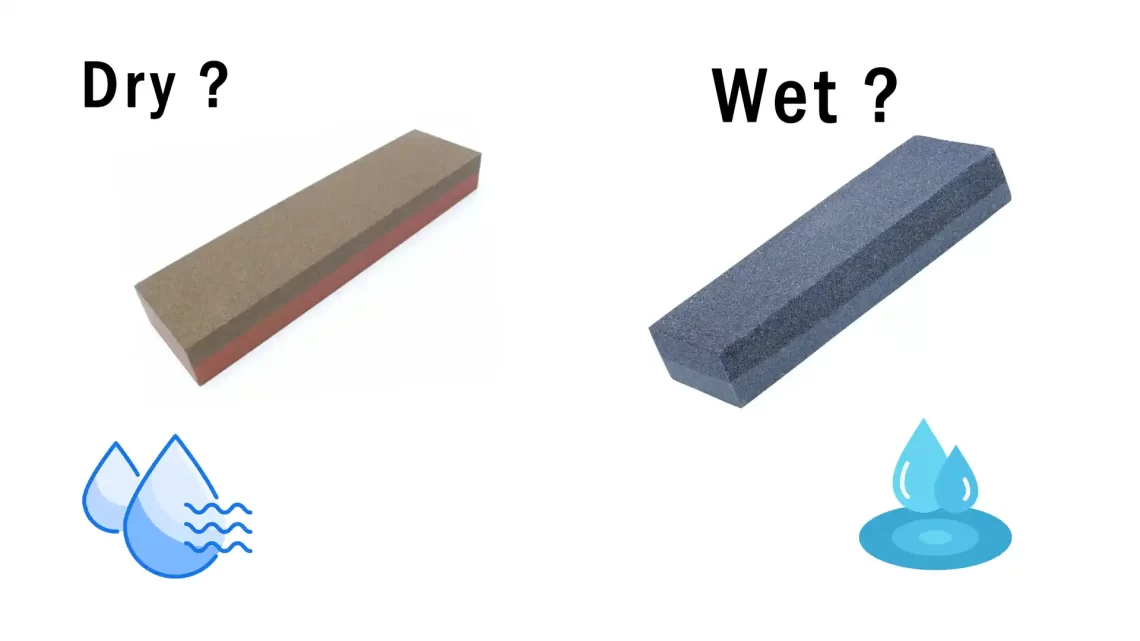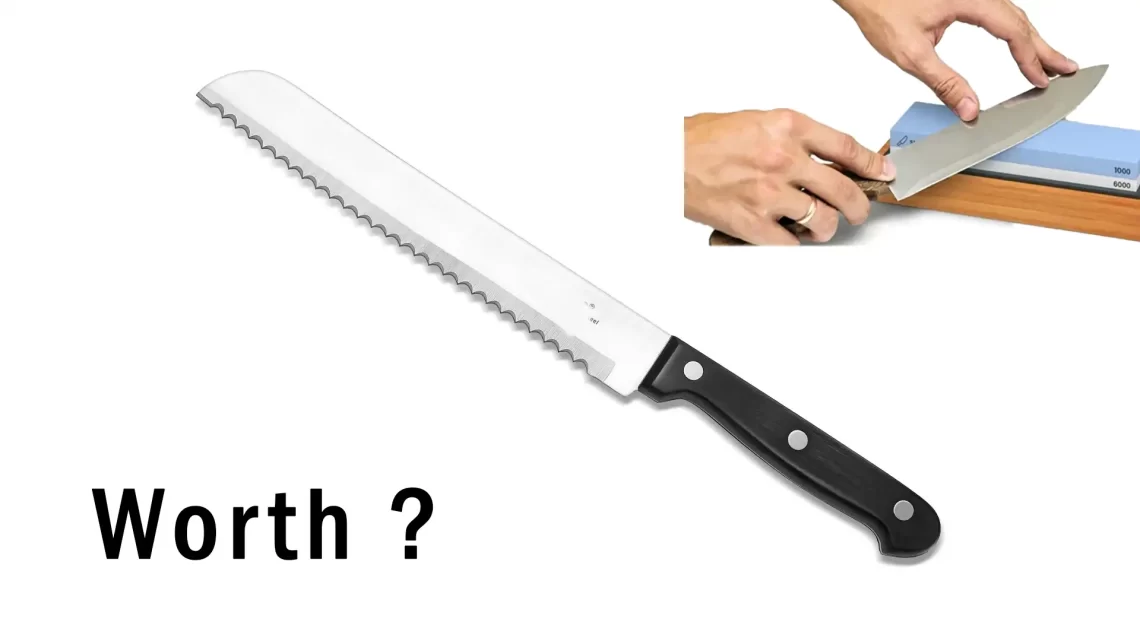Introduction
Selecting the correct honing rod is crucial for maintaining knife sharpness and safety. This guide aims to help you understand the differences between ceramic and metal rods and offer practical advice on choosing and using them effectively.
Understanding the Basics
Each knife has its own hardness, depending on its materials, affecting how it should be sharpened. Ceramic rods, very hard, are ideal for tough Japanese knives. Metal rods, often made from toughened steel or featuring diamond coatings, are versatile and work well for a wide range of Western knives.
Ceramic rods are celebrated for their exceptional hardness and abrasion resistance, making them suitable for sharpening hard Japanese knives with precision and finesse. They effectively realign the edge of the blade without wearing down quickly. On the other hand, metal rods provide adaptability and durability, accommodating various knife types and styles commonly found in Western culinary traditions.
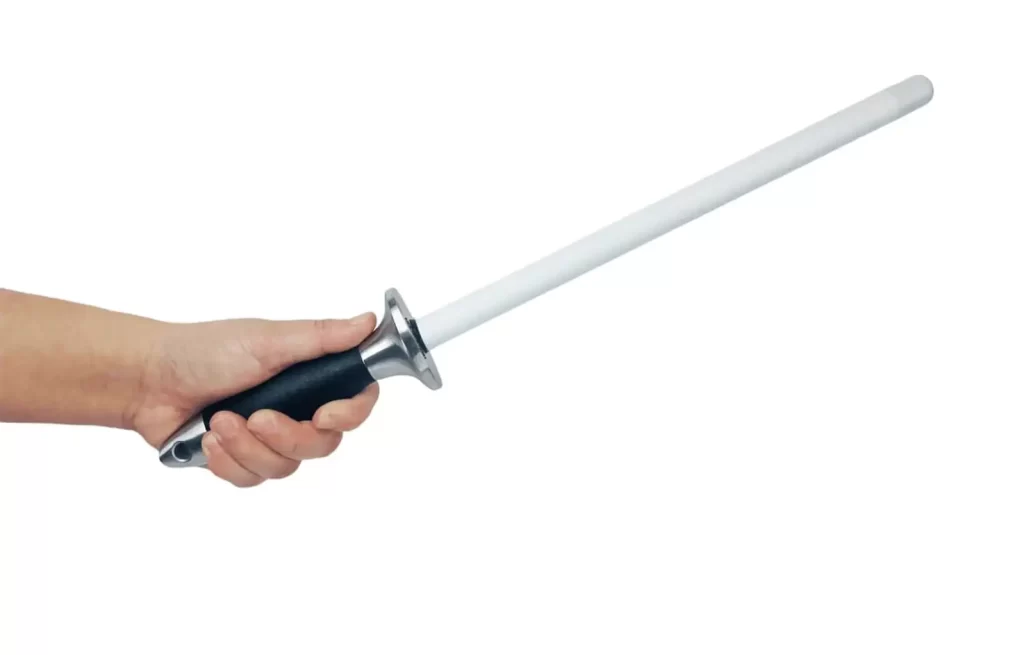
Checking Knife Dullness
Before using a honing rod, assess your knife’s condition. For minor dullness, a few passes on the rod may suffice. If severely dulled, chipped, or damaged, consider using a sharpening stone or seeking professional help.
Inspecting your knife visually and running your fingertips along the edge helps identify any irregularities or rough spots that indicate the level of dullness and the appropriate sharpening approach needed. This step ensures that you choose the most effective method for restoring your knife’s sharpness and prolonging its lifespan.
Quick Fixes and Convenience
Honing rods are convenient and easy to use, perfect for chefs in busy kitchens or home cooks. Regular use ensures knives remain sharp and ready for action, improving efficiency and safety.
The hallmark benefit of honing rods lies in their ability to provide quick fixes for maintaining knife sharpness during culinary tasks. Whether you’re a professional chef navigating a bustling restaurant kitchen or a home cook preparing a family meal, honing rods serve as indispensable tools for on-the-fly edge maintenance. Incorporating honing rod usage into your regular cooking routine ensures that your knives remain sharp, precise, and ready for action at a moment’s notice, enhancing both efficiency and safety in the kitchen.
Effective for All Knives
Contrary to misconceptions, honing rods work well for all types of knives, including Japanese and Western styles. Both ceramic and metal rods can effectively maintain knife edges when used correctly.
Dispelling common misconceptions, honing rods are highly effective for sharpening double bevel knives, including various Japanese and Western blade styles. While traditional wisdom may suggest that honing rods are incompatible with Japanese knives due to their harder steel compositions and finer edge geometries, modern honing rods have evolved to accommodate these nuances effectively. Both ceramic and metal rods can be used to maintain the edges of double bevel knives, provided that the appropriate rod hardness and abrasiveness match the knife’s steel composition and hardness level. Exercise caution and select the right honing rod for your specific knives to avoid potential damage or degradation of the blade edge during sharpening.
Choosing Between Ceramic and Metal Rods
Consider factors like knife hardness and sharpening preferences when choosing between ceramic and metal rods. Ceramic rods offer exceptional hardness but require careful handling. Metal rods are durable and versatile, suitable for various knife types and styles.
When choosing between ceramic and metal honing rods, several key factors come into play, including knife hardness, sharpening preferences, and intended usage scenarios. Ceramic rods, crafted from high-density ceramic materials such as alumina or zirconia, offer unparalleled hardness and abrasion resistance, making them ideal for sharpening hard Japanese knives with precision and finesse. In contrast, metal rods, typically constructed from hardened steel or diamond-coated surfaces, provide versatility and durability, making them suitable for sharpening a wide range of knife types and styles. When selecting between ceramic and metal honing rods, it’s essential to consider the hardness of your knives, your sharpening preferences, and the specific tasks you intend to perform, ensuring that your chosen rod aligns with your culinary needs and preferences.
Conclusion
Choosing the right knife sharpening rod is a critical aspect of maintaining knife performance and safety. By understanding the fundamentals of knife maintenance and honing rod usage, you can make informed decisions that optimize cutting performance, enhance kitchen efficiency, and prolong the lifespan of your blades.

